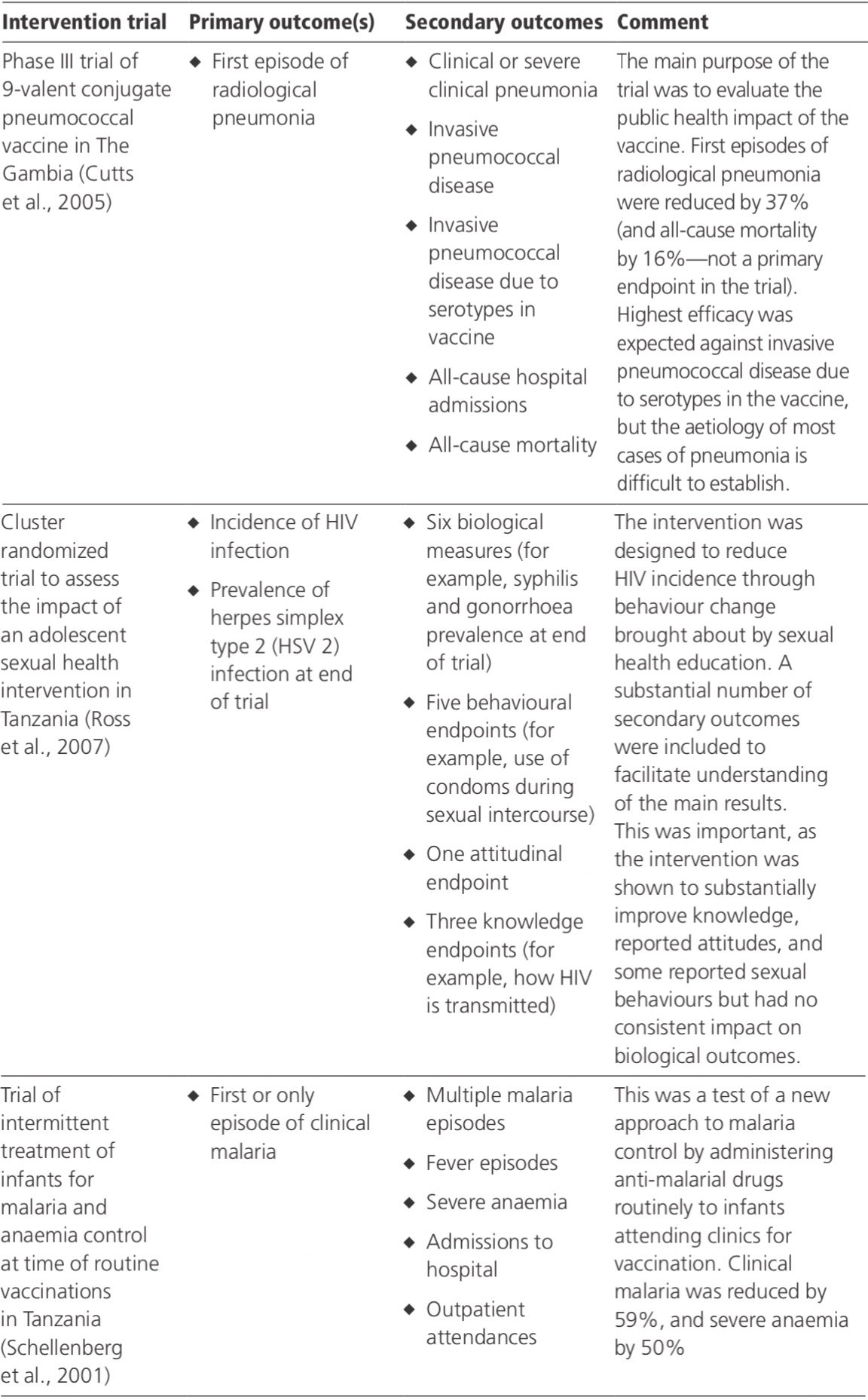12.1: Introduction to outcome measures and case definition
- Page ID
- 13207
Field trials of health interventions are designed to assess the impact of one or more inter- ventions on the incidence, duration, or severity of specified diseases, or on intermediate variables or risk factors considered to be closely related to these measures of disease (for example, hygiene behaviours for diarrhoeal diseases, reduction in density of para- site vector, reduction of indoor air pollutants for pneumonia, or reduction of salt intake for hypertension). The measures chosen to assess the impact of the interventions are called the outcome measures in the trial (or the trial endpoints). Such measures should be defined at the time the trial is designed and should be specified in detail in the study protocol. The outcomes should be compared between those in the different intervention groups and should be measured in a consistent way during the course of the trial in the different groups. Clear definitions are also necessary, so that the measures can be rep- licated in other trials and meaningful comparisons made between trials. Failure to pay sufficient attention to the precise definition of the primary outcome measures at the start of a trial may lead to confusion in interpreting the results or can even invalidate them.
As discussed in Chapter 4, Section 5, several different outcome measures may be em- ployed in a trial. It is important to decide which is of most interest (primary outcome), as this has major design implications, particularly in terms of the study size and duration. Trials may have other outcomes (secondary or tertiary) that may be important to meas- ure, although they will generally not determine the size of the trial. In Table 12.1, there are some examples of primary and secondary outcomes for trials of different interventions.
In this chapter, different types of outcome measures are reviewed in Section 2, and factors influencing the selection of these are discussed in Section 3. The importance of standardizing measurements between different observers is stressed in Section 4.1, and there is a discussion of how the results of a trial may be influenced by poor sensitiv- ity or specificity in the outcome measures in Section 4.2. Finally, ways of avoiding bias and maintaining quality control (QC) in case ascertainment methods are reviewed in Sections 4.3 and 4.5.
Table 12.1 Examples of primary and secondary outcomes for trials of different interventions


